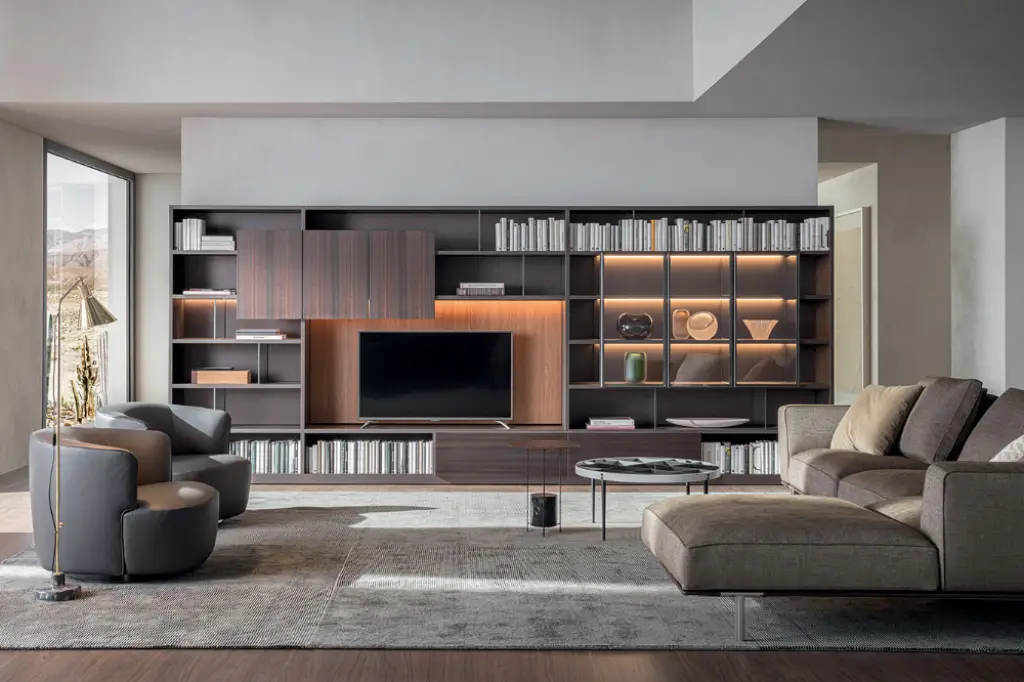As furniture becomes sleeker, lounge-focused, and adaptable to a wide range of uses, it’s often referred to as contemporary furniture. While most modern designs are physically large and feature opulent materials like metal or leather, contemporary pieces are smaller in scale but still incorporate those materials.
Contemporary furniture design often features clean lines with an emphasis on functionality. These styles offer the same comfort as their predecessors and utilize innovative features such as durability and sustainability that can make them cost-effective for businesses who need long-term investments without compromising comfort for workers or guests. Contemporary designs also allow for flexibility in a business’s interior design and brand identity. If you’re looking to utilize furniture that addresses modern goals, you’ll want to explore the wide range of contemporary furniture styles available from top furniture brands.

Contemporary furniture is often described as minimalist in style, which means the furniture itself is usually small-scale with very few components, and it’s sleek, sophisticated, and modern. Sometimes contemporary furniture isn’t too far off from traditional designs: elegant wood frames or metal legs will always stay fashionable. Even if a piece of contemporary furniture doesn’t look radically different from its classic counterparts, it still opens up the possibility for more choices to be made on where to put pieces inside space and how to create that space’s overall identity.
Modern VS Contemporary Furniture Design
The term contemporary furniture describes a broad range of styles and design characteristics that are often described as more modern than traditional. In addition, the term is used to describe designs that are highly adaptable to a variety of settings, allowing businesses to save space and features that are more sustainable for the environment without sacrificing comfort or style.
Historically, furniture design often involved eccentric building and decorative details, but modern designers are often more focused on function over form. It’s for these reasons that contemporary furniture is often referred to as “functional” furniture.
While modern furniture may not be as visually striking as styles of the past, it will still feature ample space for people to spread out and table settings that can accommodate group dinners or conversations with one another. Contemporary designs are typically optimized for the comfort of guests or workers, whether at home or in an office setting, even though they maintain a clean aesthetic.
Contemporary Style In Furniture
The term contemporary design encompasses a diverse range of visuals and materials used to create both functional and aesthetic designs. While each piece may feature a different material or color, all of these items share similar design characteristics and are part of the same set. This allows businesses to create cohesive interior designs that incorporate both stylish and easy to maintain furniture.
The primary reason for the wide variety of contemporary furniture styles is to provide various options for designers who may be looking for pieces that complement existing styles or can be used to create unique looks in any number of settings. In addition, these pieces can help businesses generate more inviting atmospheres that encourage visitors or workers to spend more time together.
Sustainability
Contemporary furniture often incorporates sustainable features to make them more cost-effective while still providing an elegant aesthetic experience. However, as more businesses are looking to create a more efficient design with thoughtful solutions to save money and workplace space, it’s important to consider the future benefits of incorporating sustainable elements in your design.
Incorporating sustainable features in contemporary furniture designs can help businesses optimize their decision-making process for low-cost updates. Sustainable furniture is often made from environmentally friendly materials that are also durable, saving businesses time and money for maintenance and repairs. Sustainable furniture also allows designers and business owners to make small changes over time based on feedback from consumers or employees without making as many purchases that can’t be used long-term.
Comfort & Clean Lines
Contemporary pieces are designed with comfort in mind. As a result, they often focus on clean looks that don’t require additional decorations, allowing designers to work around existing features in an office or home instead of opting for new features that may not match existing decor. This kind of flexibility is usually reserved for high-end items that can provide the same aesthetic experience as contemporary designs but often at a higher cost.
As businesses move towards more open workspaces and smaller meeting spaces, contemporary furniture is designed to be used in various settings without sacrificing its available design options. This can help employees or guests find the perfect setting for a variety of conversations and group activities without switching items around repeatedly.
Flexibility
Contemporary furniture designs are flexible because they use traditional furniture design elements like clean lines and functionality to create styles that are both accessible and adaptable to a wide range of uses. The vast number of uses made possible by contemporary furniture can help businesses save on fixed costs and maintenance costs.
For example, a contemporary style office chair might use traditional wooden legs with durable fabric upholstery instead of expensive metal legs that may rust or require regular maintenance from experienced cleaners when used outside of the home. This is a much more affordable option that can save businesses time and money instead of searching for additional accessories that can be used to decorate the space.
The primary goal of contemporary furniture is to provide a design type that fits in with the architecture or décor of a business and helps the space function better. This means that contemporary furniture may be less cost-effective for companies looking to create complete interior overhauls. Still, it’s an option worth exploring if you’re interested in investing money into furnishings that can last for years without requiring extensive maintenance.
